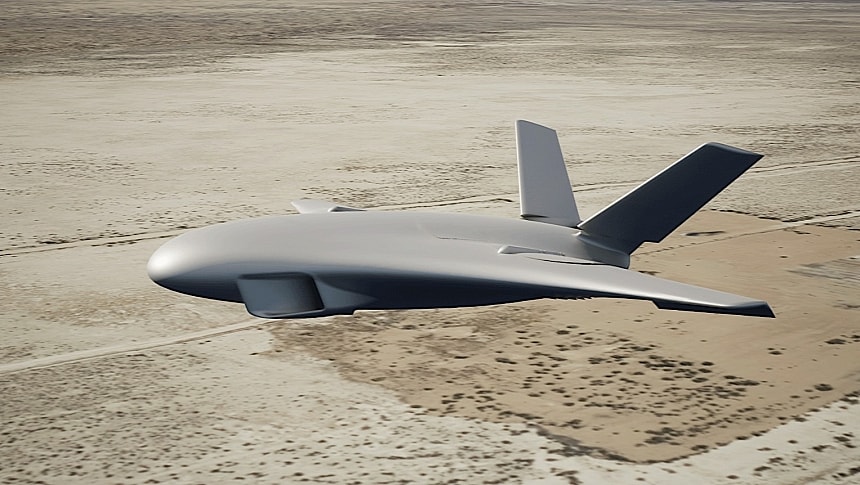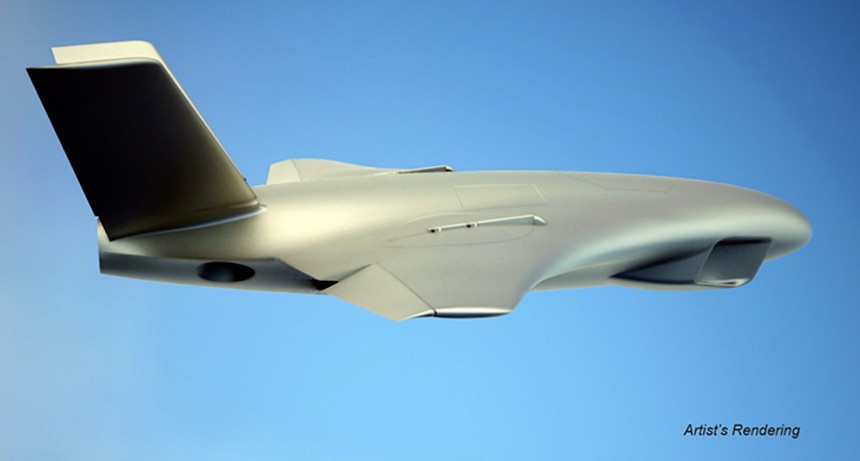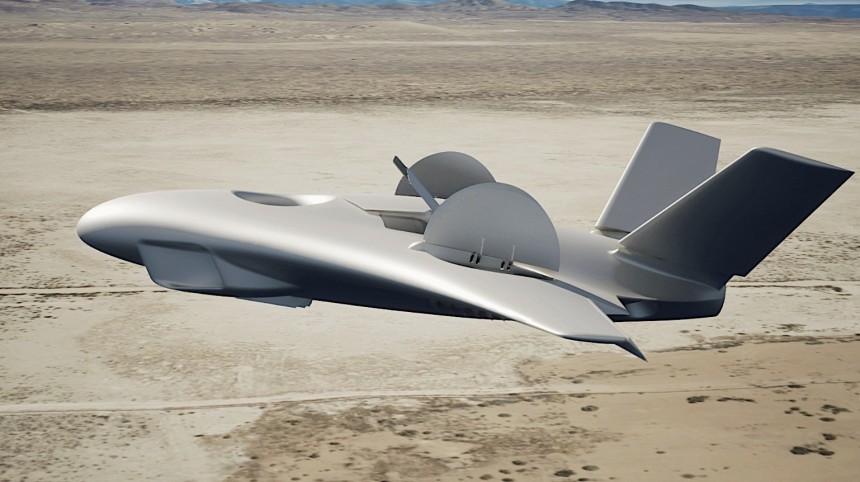The aviation industry is going through some truly major changes. And, at least this time, I'm not referring to the strides made in the field of means of propulsion, but specifically to the changes in the shape and form of aircraft to come.
Various programs run by different agencies and companies are presently ongoing in the U.S., many of them targeted at rethinking the form of aircraft in a bid to make them more efficient. Older designs like blended-wing body, or diamond wings with no control surfaces, and even truss-braced wings are being revisited in a bid to give flying vehicles new life.
Many of these programs are being run by the mighty Defense Advanced Research Projects Agency (DARPA), and it's exaclty such a project that brings us here today. It's called SPeed and Runway INdependent Technologies (SPRINT), and it's relatively new in this fascinating world of aviation research.
The program was announced last year and it aims to "design, build, and fly an X-plane to demonstrate the key technologies and integrated concepts that enable a transformational combination of aircraft speed and runway independence."
What that means is DARPA, together with its partner in crime U.S. Special Operations Command, aims to come up with a prototype aircraft that can reach speeds of up to 518 mph (833 kph) at undisclosed altitudes.
That's not a particularly impressive number, but what's important about this design is that it will be capable of taking off and landing on unprepared surfaces, a requirement that is becoming more and more stringent in today's world.
There are several ways to go about this capability, but today we'll focus on an idea coming from a company called Aurora Flight Sciences, a subsidiary of Boeing and a participant in the SPRINT effort.
Aurora is a relative newcomer to the world of aviation, having been established in 1989. It was only after it was acquired by Boeing in 2017 though that its name began gaining true weight in the industry.
The company is presently involved in several other major projects, some led by DARPA, including an effort called Control of Revolutionary Aircraft with Novel Effectors (CRANE) to design a plane with no control surfaces and a diamond shape of the wings.
In the first phase of the SPRINT program the company is competing agains three other companies, namely Bell Textron, Northrop Grumman, and Piasecki Aircraft Corporation. Of the entire bunch, it is the first one to give us a glimpse of the aircraft its engineers are imagining.
As per the requirements of the program, Aurora is working on a vertical-lift aircraft. Although the name does sound a bit fancy, it's a means of getting airborne that's been used by helicopters for ages.
Aurora says it has moved the project to a preliminary design phase after completing the conceptual design review. And what we have on our hands so far looks, at least on paper, pretty impressive.
The Aurora will be shaped like a fan-in-wing, with the machine looking like a really fat aircraft in a blended wing body design when looked at from above, but one that hides fans on the underside of the wings.
It is these fans that should allow the Aurora project to take off the ground and land pretty much like all other vertical take-off and landing (VTOL) aircraft in existence, thus eliminating the need for a proper runway to be used for these tasks.
What the idea brings new to the table is the speed mentioned above, 518 mph (833 kph). That's a number not many VTOLs can achieve and much faster that what the fastest helicopters in the world can reach – the record-holding Airbus X3, for instance, barely crawled to 293 mph (472 kph).
It's not yet clear what kind of powertrain will animate the Aurora SPRINT, but we are told it is being designed to use existing engines which should provide VTOL, super short take-off and landing (SSTOL), and even conventional ways of taking off and landing.
We also know it will rely on three lift fans taking up into the sky a body made of composite materials. There should be a smooth transition from vertical to horizontal flight, but there is no room for a pilot in there, because there's no need for one – this concept is akin to a drone.
DARPA has said ever since the onset of the SPRINT program that it will not result in a series-production aircraft, as this is merely a test bed for new technologies that could be included in future aircraft.
With that in mind, Aurora says the fan-in-wing design could be scaled to include up to four fans, and the drone could very easily be transformed into a crewed flying platform to be used, for instance, during Special Operations Forces (SOF) missions.
Aurora says the preliminary design review for their SPRINT proposal should be ready in about a year, and the actual first flight of the aircraft should take place sometime in 2027.
Many of these programs are being run by the mighty Defense Advanced Research Projects Agency (DARPA), and it's exaclty such a project that brings us here today. It's called SPeed and Runway INdependent Technologies (SPRINT), and it's relatively new in this fascinating world of aviation research.
The program was announced last year and it aims to "design, build, and fly an X-plane to demonstrate the key technologies and integrated concepts that enable a transformational combination of aircraft speed and runway independence."
What that means is DARPA, together with its partner in crime U.S. Special Operations Command, aims to come up with a prototype aircraft that can reach speeds of up to 518 mph (833 kph) at undisclosed altitudes.
That's not a particularly impressive number, but what's important about this design is that it will be capable of taking off and landing on unprepared surfaces, a requirement that is becoming more and more stringent in today's world.
Aurora is a relative newcomer to the world of aviation, having been established in 1989. It was only after it was acquired by Boeing in 2017 though that its name began gaining true weight in the industry.
The company is presently involved in several other major projects, some led by DARPA, including an effort called Control of Revolutionary Aircraft with Novel Effectors (CRANE) to design a plane with no control surfaces and a diamond shape of the wings.
In the first phase of the SPRINT program the company is competing agains three other companies, namely Bell Textron, Northrop Grumman, and Piasecki Aircraft Corporation. Of the entire bunch, it is the first one to give us a glimpse of the aircraft its engineers are imagining.
As per the requirements of the program, Aurora is working on a vertical-lift aircraft. Although the name does sound a bit fancy, it's a means of getting airborne that's been used by helicopters for ages.
Aurora says it has moved the project to a preliminary design phase after completing the conceptual design review. And what we have on our hands so far looks, at least on paper, pretty impressive.
It is these fans that should allow the Aurora project to take off the ground and land pretty much like all other vertical take-off and landing (VTOL) aircraft in existence, thus eliminating the need for a proper runway to be used for these tasks.
What the idea brings new to the table is the speed mentioned above, 518 mph (833 kph). That's a number not many VTOLs can achieve and much faster that what the fastest helicopters in the world can reach – the record-holding Airbus X3, for instance, barely crawled to 293 mph (472 kph).
It's not yet clear what kind of powertrain will animate the Aurora SPRINT, but we are told it is being designed to use existing engines which should provide VTOL, super short take-off and landing (SSTOL), and even conventional ways of taking off and landing.
We also know it will rely on three lift fans taking up into the sky a body made of composite materials. There should be a smooth transition from vertical to horizontal flight, but there is no room for a pilot in there, because there's no need for one – this concept is akin to a drone.
DARPA has said ever since the onset of the SPRINT program that it will not result in a series-production aircraft, as this is merely a test bed for new technologies that could be included in future aircraft.
With that in mind, Aurora says the fan-in-wing design could be scaled to include up to four fans, and the drone could very easily be transformed into a crewed flying platform to be used, for instance, during Special Operations Forces (SOF) missions.
Aurora says the preliminary design review for their SPRINT proposal should be ready in about a year, and the actual first flight of the aircraft should take place sometime in 2027.








